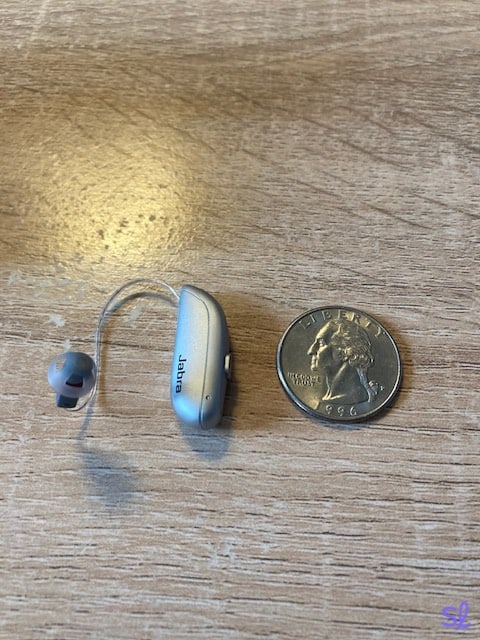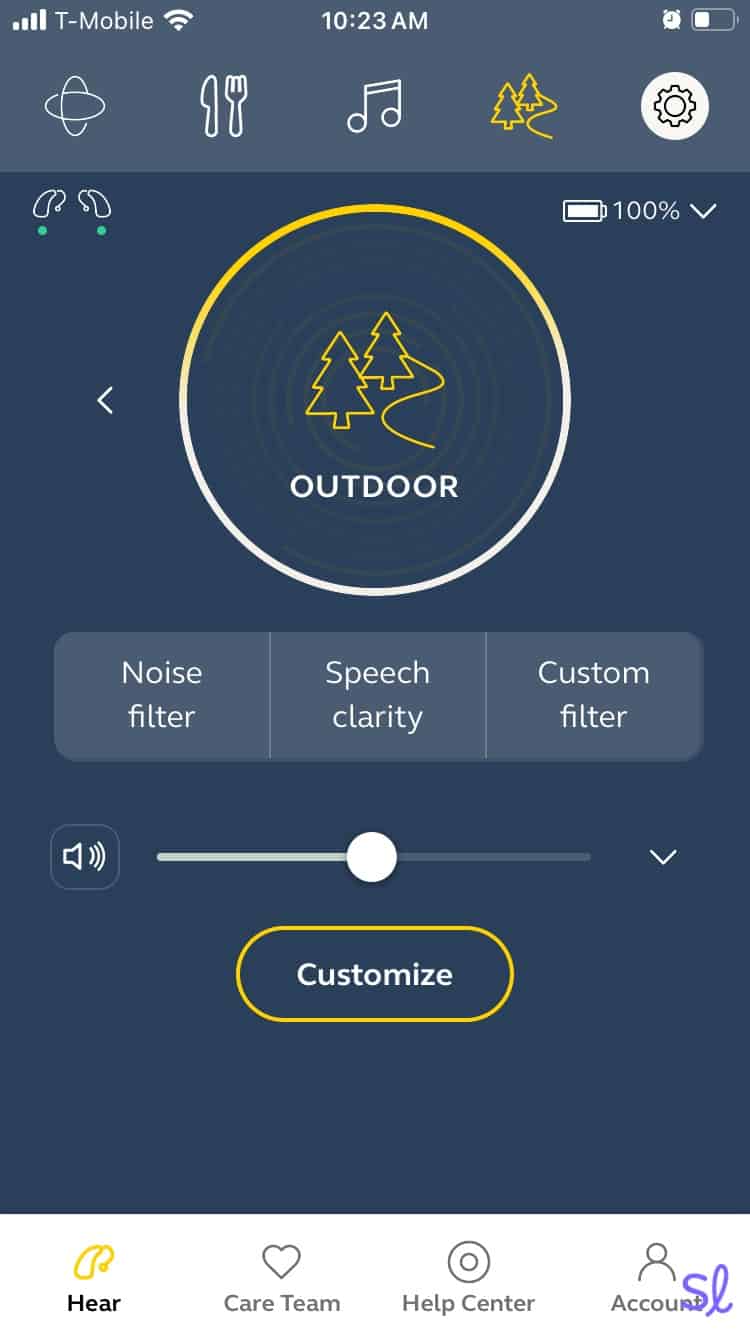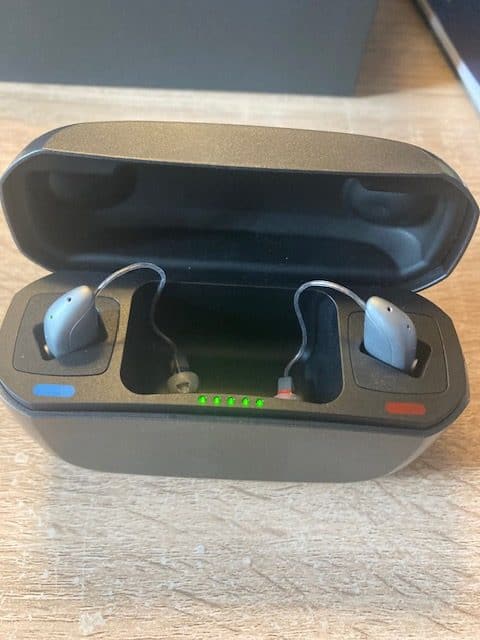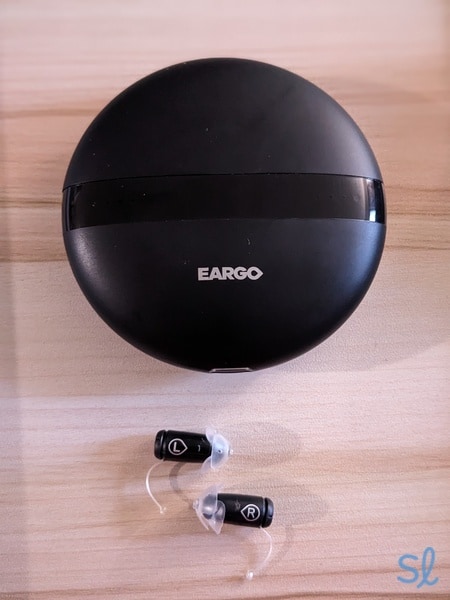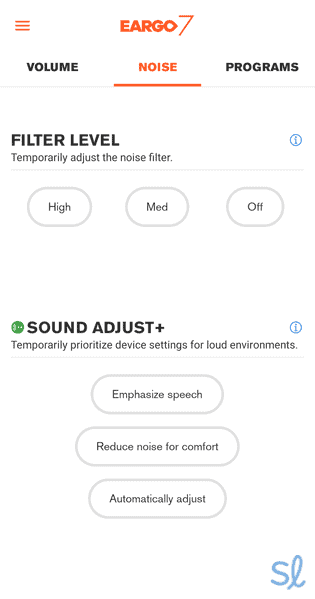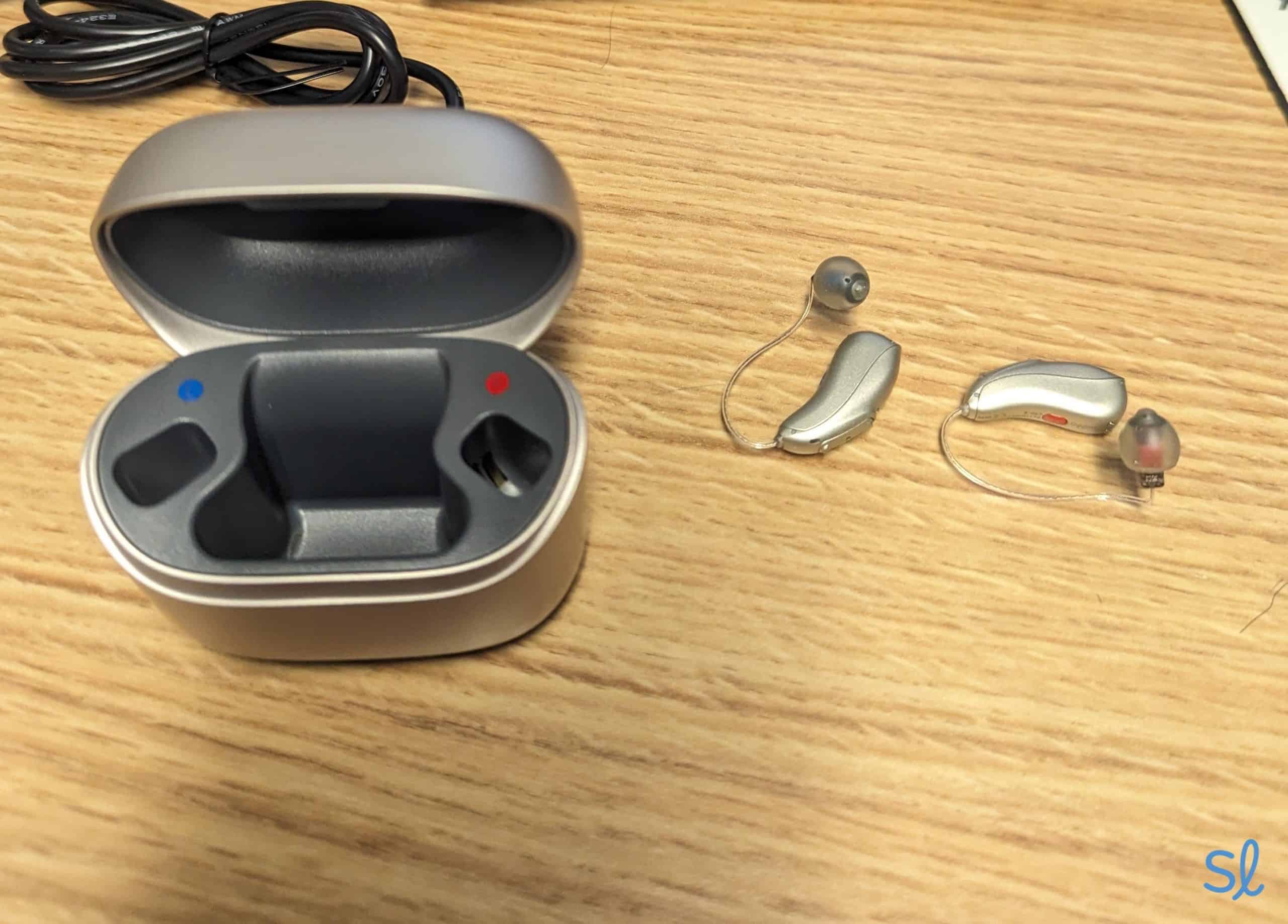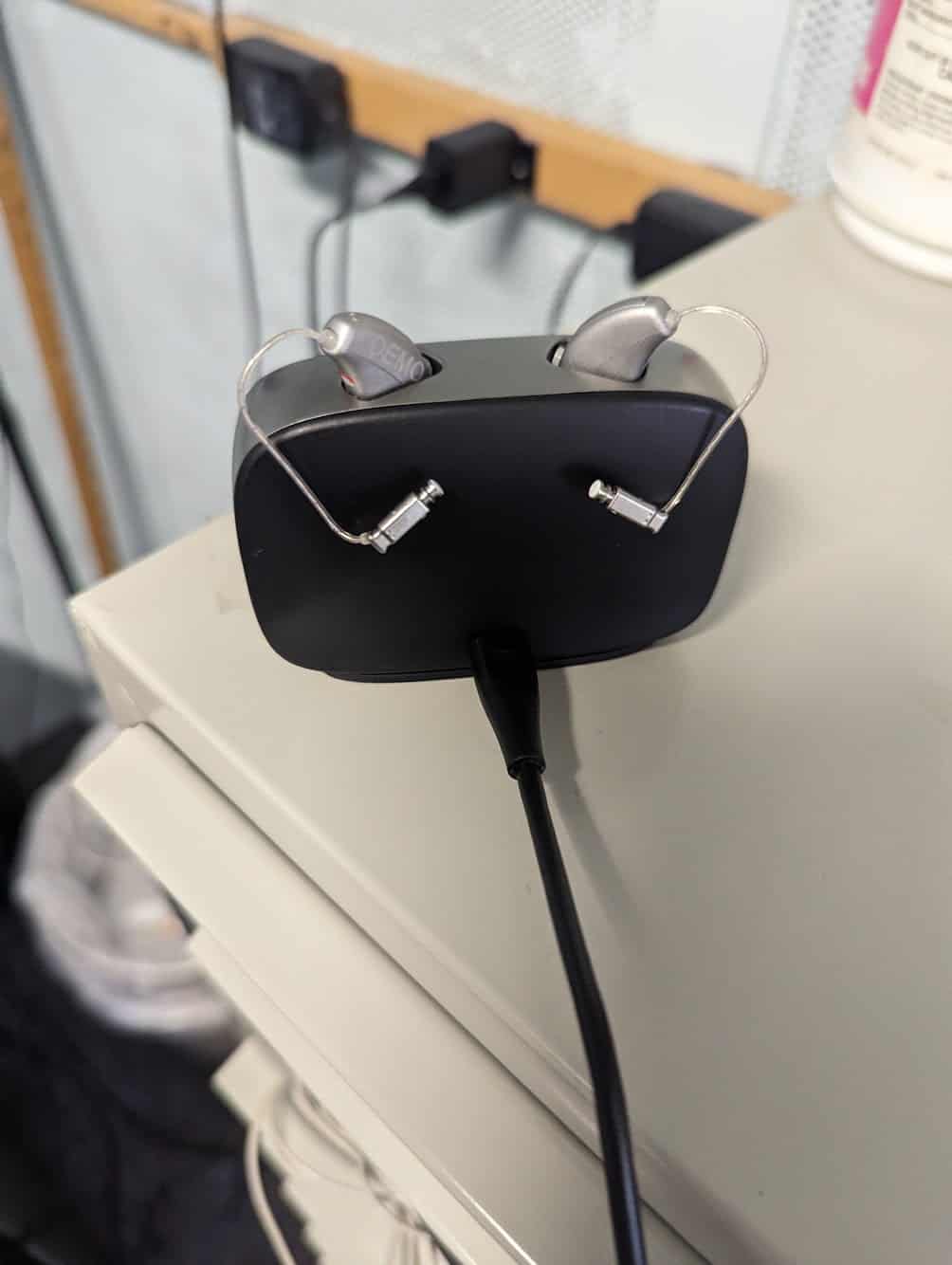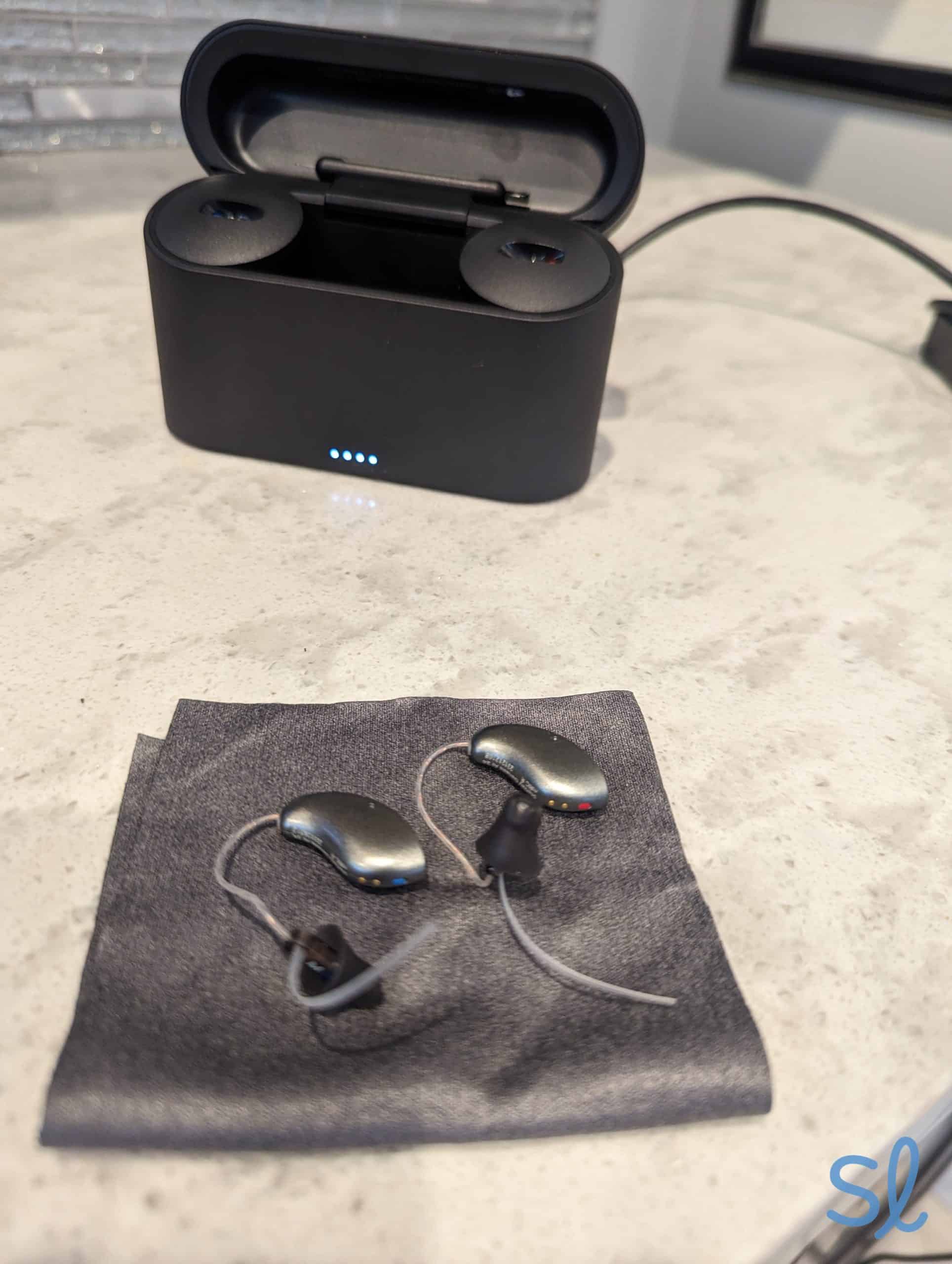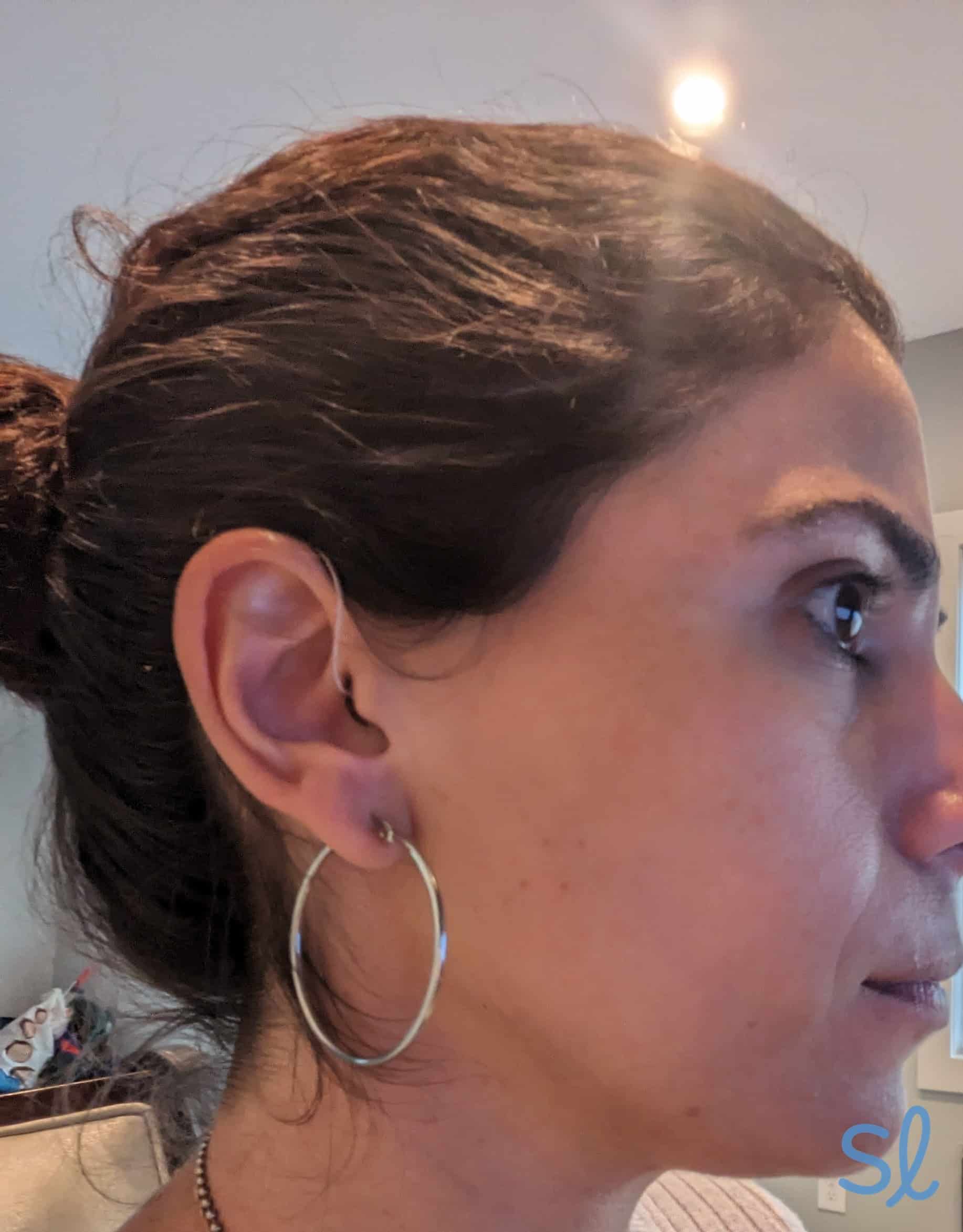Best Bluetooth Hearing Aids of 2025, Tested and Reviewed by Audiologists
Our top picks for made-for-iPhone and Android-compatible Bluetooth hearing aids performed well in our testing categories, including ease of use, sound quality, and overall value.
Our team of audiologists and tech experts tested the industry’s leading hearing aids to find the best Bluetooth models.
Our team of audiologists and tech experts tested the industry’s leading hearing aids to find the best Bluetooth models.
SeniorLiving.org is supported by commissions from providers listed on our site. Read our Editorial Guidelines
- Adjustable settings and volume via Bluetooth
- Prices starting at $995 per pair
- Up to 24 hours of listening time per charge
- Adjustable settings and volume via Bluetooth
- Prices starting at $799 per pair
- Up to 16 hours of listening time per charge
- Adjustable settings and volume via Bluetooth
- Prices starting at an estimated $1,000 per ear
- Up to 16 hours of listening time per charge
- Options for mild to severe hearing loss
- Personalization with AI technology
- Wide variety of models
- Options for mild to profound hearing loss
- Health and wellness features
- Advanced AI technology
Contents
Key Takeaways
- Our top pick, Jabra Enhance, offers three BTE hearing aids with direct Bluetooth streaming, an intuitive mobile app for on-the-go adjustments, and three years of audiologist support with Premium packages.
- When selecting the best Bluetooth hearing aids, we considered device compatibility, ease of use, sound quality, price, value, and size.
- We spent a week testing the hearing aids on this list, and consulted with our resident audiologist, Dr. Ruth Reisman, on the best OTC and prescription hearing aids with Bluetooth streaming.
Bluetooth hearing aids make it easy to connect wirelessly to many of your favorite devices, including smartphones, tablets, and laptops. Quality Bluetooth hearing aids should be easy to use, compatible with a wide range of devices, and be able to keep a charge for at least a full day. Older adults with hearing loss should be able to use them all day to hear phone calls, listen to music, watch TV, and more, and then leave them to charge at night.
We evaluated Bluetooth compatibility, price, sound quality, durability, and ease of use to narrow our list of the best Bluetooth hearing aids. We put Jabra Enhance at the top of our list. Jabra Enhance is fantastic because of its advanced Bluetooth devices, mobile app for wireless adjustments, and affordable pricing.
This guide covers our picks for the best Bluetooth hearing aids based on extensive hands-on testing by our tech team, plus evaluations from Dr. Ruth Reisman, a licensed audiologist.

My Jabra Enhance Select 300 came with a wide variety of domes

The Best Bluetooth Hearing Aids
Our Methodology: How We Chose the Best Bluetooth Hearing Aids
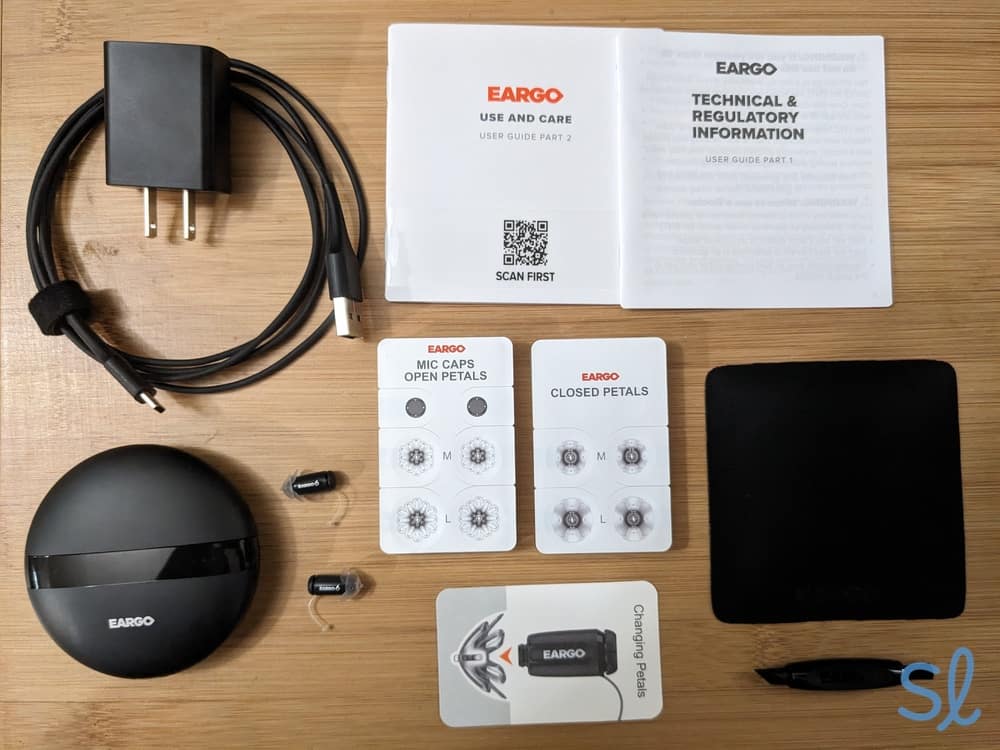
Our team of tech experts test the hearing aids on our list by hand, including the Eargo 6 featured above.
How We Tested the Hearing Aids
Our tech team conducted over 100 hours of hands-on testing to compare the top Bluetooth hearing aids. We focused on multiple factors that could affect efficacy and comfort for users and took notes on our experience.
Here’s what our testing process looked like for OTC hearing aids that could be ordered online without a prescription:
- We tried out each brand’s online hearing test, comparing our results to in-person evaluations from an audiologist.
- Then, we ordered our hearing aids online, evaluating the overall purchasing process. We considered the price and value of each hearing aid model, considering seasonal promotions, extra fees, and upfront costs.
- Once we had our devices, we followed the instructions to set them up. If the brand had a mobile app, we downloaded it to our phones and tested out the Bluetooth connectivity. We evaluated the ease of use and the total number of steps to get our hearing aids connected to our phone or tablet via Bluetooth.
- We contacted customer service several times to evaluate the quality of care by phone, mobile app, and online chat features.
- Our team tested each hearing aid for a week, using them at home, in noisy environments, and in one-on-one conversational settings. We evaluated the hearing aid’s features, sound quality, and ease of use in each location. We also tested how well Bluetooth features worked when the hearing aid batteries were low or when we were further from our streaming device.
For prescription hearing aids that can’t be ordered online, we spoke with Dr. Reisman about her expertise with each brand. We used her experience prescribing and testing these hearing aids, along with feedback from her patients, to evaluate and rank them.
How We Chose the Best Hearing Aids
Our tech experts, along with Dr. Reisman, researched and tested many of the industry’s best hearing aids and compiled this list of our top picks. We assessed each device based on several criteria, such as:
- Bluetooth compatibility: Some devices are equipped to work with the latest in Bluetooth technology (like Bluetooth 5.4, LE Audio, and Auracast). However, many seniors have phones that only work with older versions of Bluetooth. While Bluetooth tech is generally backward-compatible, performance may decline when combining newer hearing aids with devices using older versions of Bluetooth. We looked for hearing aid providers that consider this, with all hearing devices on this list working with Bluetooth 5.0 (2016 version) or later.
- Durability: Hearing aids can be expensive. For this reason, we chose Bluetooth hearing aids with strong, durable designs that can be used daily for years without frequent repairs or replacements.
- Ease of use: Bluetooth technology may seem a little advanced for less tech-savvy seniors, but once you get the hang of it, Bluetooth hearing aids can (and should) be very easy to use. We tested different brands to see which ones offered the most user-friendly experience to seniors.
- Price: The Bluetooth hearing aids on this list are available at various price points, ensuring that there are good options for most budgets.
- Sound quality: While Bluetooth is a reliable connection type for hearing aids, it doesn’t guarantee that the underlying device will provide great sound quality. Dr. Reisman reviewed our research and testing to see which Bluetooth hearing aids could offer the best overall sound quality and value.
- Size: Many older adults prefer models that are lightweight, comfortable to wear, and discreet. We evaluated brands with larger, behind-the-ear models, plus smaller, completely-in-canal models.
Why Trust Us?
Our tech experts test out the latest devices for seniors each year. We’ve logged hundreds of hours testing and reviewing Bluetooth hearing aids from dozens of providers.
We also work with experts like our resident licensed audiologist, Dr. Ruth Reisman. She has personally tested and prescribed Bluetooth hearing aids from the providers on this list. She discussed some of her patients' challenges with Bluetooth technology and offered her firsthand experience to help us choose the best OTC and prescription Bluetooth hearing aids. Dr. Reisman has over 15 years of experience working with older adults with hearing loss.
Bluetooth Hearing Aids Compared Side by Side

Jabra Enhance
|

Eargo
|

Phonak
|

Widex
|

Starkey
|
|
|---|---|---|---|---|---|
| Rating | 4.8 | 4.3 | 4.4 | 4.4 | 4.4 |
| Hearing Loss | Mild to moderate | Mild to moderate | Mild to profound | Mild to profound | Mild to profound |
| Price | $995 to $1,995 per pair | $799 to $2,950 per pair | $1,000 to $3,750 per device | $1,000 to $3,750 per device | $1,000 to $4,000 per device |
| Hearing aid type | OTC | OTC | Prescription | Prescription | Prescription |
| Return option | 100 days | 45 days | 90 days | 45-90 days | 30 days |
| Remote support | Yes | Yes | Yes | Yes | Yes |
| Mobile app | Yes | Yes | Yes | Yes | Yes |
| Tinnitus features | Yes | No | Yes | Yes | Yes |
| Device Compatibility | Android and iOS | Android and iOS | Android and iOS | Android and iOS | Android and iOS |
-
1. Jabra Enhance - Best available for online purchase
See Pricing Links to Jabra EnhanceWhat we like most
- Adjustable settings and volume via Bluetooth
- Prices starting at $995 per pair
- Up to 24 hours of listening time per charge
Jabra EnhanceSee Pricing Links to Jabra EnhanceOverview:Jabra Enhance Select 300 hearing aids
Jabra Enhance, formerly called Lively, offers high-tech, over-the-counter (OTC) Bluetooth hearing aids. These hearing aids are ideal for mild to moderate hearing loss, offering additional features for individuals struggling with tinnitus. Dr. Reisman notes, “Jabra Enhance hearing aids can be a great solution for someone who is independently tech savvy and wants an affordable and flexible solution to manage their hearing loss and tinnitus.”
» Related Reading: Best hearing aids for tinnitus
The company’s three behind-the-ear (BTE) hearing aids are “Made for iPhone,” which means they are designed to seamlessly connect with most iOS devices. If you’re on team Android, direct or accessory-supported streaming is available, depending on the model you choose.
We tested them out on both types of devices and had no issue maintaining a Bluetooth connection with clear sound quality. Remember, Jabra Enhance hearing aids are only available online. That also means they are not custom-fit in person, so they are best for seniors who don’t mind making remote adjustments.
Pros & Cons:Pros About Jabra Enhance
- Bluetooth for wireless adjustments and direct streaming
- Three-year warranty and follow-up hearing care and technical support with Premium packages
- Free online hearing test
- 100-day money-back guarantee
- Free shipping
Cons About Jabra Enhance
- Not suitable for severe or profound hearing loss
- Only BTE models available
- Not all hearing aid models are equipped with binaural directionality.
Our Hands-on Experience:Our Experience With Jabra Enhance
Jabra Enhance’s Bluetooth technology makes it easy to wirelessly adjust the hearing aids with just a few taps on your smartphone or tablet. During testing, a Jabra Enhance audiologist walked us through how to use the mobile app and helped us make adjustments. The app was easy to use. We could quickly change programs, adjust volume, and chat with the audiology team.
We could also answer calls directly through the hearing aids on our iPhones, and we found the sound quality was excellent. Hands-free streaming has only been around for a few years with OTC hearing aids. In the past, you had to use an additional accessory (though this is still the case with some phone models), so we appreciate these technological advancements.
Making adjustments using the Jabra Enhance mobile app
If you’re shopping for a long-lasting rechargeable hearing aid, the Enhance Select 300 and Enhance Select 500 models provide up to 24 hours of listening time per charge, so you’ll be set for the day. We used the Jabra Enhance Select 300 for a full day without getting a “low battery” warning.
Charging Jabra Enhance Select 300 hearing aids
With a 100-day money-back guarantee and a three-year warranty for Premium packages, there isn’t much to lose when you try Jabra Enhance hearing aids. We were especially impressed with how well they reduced wind and road noise during our tests. For a closer look at Jabra Enhance, head to our latest Jabra Enhance hearing aid review.
Pricing
Jabra Enhance charges the following prices for Premium packages: Enhance Select 500 costs $1,995 per pair, Enhance Select 300 is $1,695 per pair, and Enhance Select 50R is $1,195 per pair. These are competitive prices, though a few options on the market, including MDHearing, only cost a few hundred dollars per pair. If you want to save a little more on your Jabra Enhance devices, you can select a Basic package for any model, which drops the price by $200. Remember that these basic packages are preprogrammed and won’t include follow-up care.
» Learn More: Jabra Enhance 300 review
Jabra Enhance offers multiple financing options, similar to Eargo. You can purchase the devices online. Our tech team found the purchasing process for Jabra Enhance extremely easy, as we could visit the website and order the pair of our choice in minutes.
-
2. Eargo - Most discreet
See Pricing Links to EargoWhat we like most
- Adjustable settings and volume via Bluetooth
- Prices starting at $799 per pair
- Up to 16 hours of listening time per charge
EargoSee Pricing Links to EargoOverview:Testing out Eargo 7 hearing aids
Eargo is known for its discreet hearing aids, including three completely-in-canal (CIC) models and one earbud-style device. Because they fit in the ear, Eargo’s hearing aids are sleeker and less visible than Jabar Enhance’s BTE models. LINK by Eargo is the brand’s only Bluetooth device, which lets you stream music and calls directly to the hearing aids from Apple or Android devices. These devices are designed to look like earbuds, so they’re ideal for those who want a low-profile option.
» Related Reading: Best invisible hearing aids in 2025
Eargo’s CIC devices don’t have direct Bluetooth streaming, which we were disappointed to see. Instead, Eargo’s charging case uses Bluetooth to pair your devices with the mobile app for remote adjustments. If discretion is your primary concern, you may be willing to sacrifice the Bluetooth.
» A Closer Look: Eargo 7 review and pricing
Pros & Cons:Pros About Eargo
- Available for purchase online without a prescription
- 45-day free returns
- Up to two-year warranty
- Nearly invisible design
- Rechargeable with up to 16-hour battery life
- Lifetime telecare from licensed hearing professionals
Cons About Eargo
- Not designed for those with profound hearing loss
- CIC models don’t have direct Bluetooth streaming
Our Hands-on Experience:Our Experience with Eargo
LINK by Eargo offers direct Bluetooth streaming. You can answer a call on the hearing aids with a quick tap. This model has solid sound quality, featuring directional microphones, active noise cancellation, noise reduction, and feedback cancellation. They’re also sweat- and water-resistant, making them perfect for active adults. These rechargeable devices last up to nine hours, which is short compared to Jabra Enhance’s 30-hour battery life. If you want a model that lasts all day, Eargo’s other models have 16 hours of battery life. We wore our Eargo 7s all day and never ran out of battery.
» Also Check Out: Best hearing aids for active lifestyles
Eargo’s CIC models take a unique approach to Bluetooth technology. You won’t find Bluetooth built into the devices. Instead, when we needed to tweak the settings on our devices, we tapped into Bluetooth tech via Eargo’s charging case and user-friendly smartphone app (available for iOS and Android). We found the charging case sleek, modern, and easy to use. The app gave us complete control over the volume and settings. It even allows us to apply programmed categories for different listening situations.
Using the Eargo app to adjust our hearing aid settings
Dr. Reisman notes, “Eargo hearing aids are certainly an innovation in the hearing aid arena. Its unique design, features, and customer service model has certainly allowed for true evolution in the fitting of direct-to-consumer hearing aids. Just like most devices for those who are candidates, it seems performance and satisfaction are very high for Eargo hearing aids.”
» Our Full Review: Eargo hearing aid review
Pricing
Unlike prescription brands like Phonak and Starkey, Eargo is very transparent with its pricing. LINK by Eargo, the brand's most affordable model, costs $799 per pair. If you want an invisible device, you’ll need to upgrade to the Eargo SE ($1,699 per pair) or the Eargo 7 ($2,699 per pair). Eargo offers financing for 12, 24, or 36 months, so splitting costs into monthly payments is possible. While Eargo is less expensive than prescription brands, it’s still relatively pricey compared to other OTC brands like Jabra Enhance. However, the cost may be worth it for those who want discreet hearing aids.
» Pricing Guide: Eargo hearing aid cost and pricing
-
3. Phonak - Best for those with multiple Bluetooth devices
See Pricing Links to Zip HearingWhat we like most
- Adjustable settings and volume via Bluetooth
- Prices starting at an estimated $1,000 per ear
- Up to 16 hours of listening time per charge
PhonakSee Pricing Links to Zip HearingOverview:Phonak offers a variety of hearing aids for all levels of hearing loss.
Phonak hearing aids take Bluetooth connectivity to the next level with the Audéo Lumity and Naída Bluetooth models. Unlike OTC hearing aids that are only designed for mild to moderate hearing loss, these prescription BTE devices are suitable for all levels of hearing loss, from mild to profound. If your hearing loss changes, Phonak hearing aids can be adjusted to your needs. Both models can connect directly to iOS and Android smartphones, plus other Bluetooth-enabled devices like tablets, speakers, or TVs. That’s something you can’t get with devices from Eargo.
» Hearing Loss Resource: Best hearing aids for severe hearing loss
Pros & Cons:Pros About Phonak
- Personalized dynamic noise cancellation
- Motion sensor hearing feature
- Bluetooth for wireless adjustments and direct streaming
- Binaural VoiceStream Technology™
- Bluetooth for remote adjustments and hands-free calling
- Speech enhancer
Cons About Phonak
- Can only be bought through a local provider
- No pricing information online
Our Hands-on Experience:Our Experience with Phonak
Phonak’s Audéo Lumity and Naída Lumity devices include a motion sensor that pivots between Bluetooth devices. Let’s say you’re in the kitchen cooking a delicious breakfast and listening to your favorite music streaming into your hearing aids from your smart speaker. Then, a phone call comes in from your son. You can tap your hearing aid to connect to and answer the call on your smartphone. You can easily accept and end phone calls, play and pause music, and activate the voice assistant with Phonak’s tap control feature. That means Phonak might not be the best for seniors less comfortable with new technology. But if you don’t mind a learning curve, Phonak offers a superior hearing experience to OTC brands like Jabra Enhance.
» Our Full Review: Phonak hearing aid reviews
Naída Lumity is Dr. Reisman’s favorite Phonak hearing aid because it offers fantastic support and sound for severe to profound hearing loss. She says, “These devices are often the only option for individuals with very significant hearing loss. [It has] all the advanced options of other Phonak hearing aids, including Bluetooth, hands-free calls, and Roger compatibility for supporting seamless communication in all environments. For individuals with severe hearing loss, this can significantly improve their quality of life.”
Pricing
OTC brands like Eargo and Jabra Enhance list prices online, but prescription brands, including Phonak, don’t discuss pricing online. That’s because the cost of Phonak hearing aids differs depending on where you shop. These hearing aids must be fitted and purchased in person, and every dispenser sets its prices. According to Dr. Reisman, Phonak’s prices typically range from $1,000 to $3,750 per ear.
While this is much more expensive than OTC hearing aids, Phonak’s hearing aids offer advanced features and solutions for all levels of hearing loss, which you won’t find with OTC devices. To discover if Phonak’s Bluetooth devices fit your budget, consult your local hearing care professional for additional information.
-
4. Widex - Best for music enthusiasts who want superior sound quality
See Pricing Links to Zip HearingWhat we like most
- Options for mild to severe hearing loss
- Personalization with AI technology
- Wide variety of models
WidexSee Pricing Links to Zip HearingOverview:Testing out Widex Moment hearing aids
Widex offers cutting-edge technology, including features like ZeroDelay and PureSound, which enable lightning-fast sound processing. The result is crystal clear, natural sound without distortion, perfect for enjoying music, conversations, and more. It’s easy to understand why musicians and our resident audiologists favor Widex! Dr. Brad Ingrao, one of the audiologists we consult, says that Widex is his go-to brand for musicians while performing. Widex offers a wide range of prescription hearing aids for mild to profound hearing loss. There are solutions for most users.
Did You Know? Cost plays a major role in the 17 million U.S. seniors with hearing loss who don’t use hearing aids.
Pros & Cons:Pros About Widex
- PureSound technology with zero delay
- SoundSense AI learning
- TruAcoustics feature for a highly customized sound
- Bluetooth for wireless adjustments and direct streaming
- Tinnitus management features
- Discreet rechargeable models
Cons About Widex
- Cannot purchase Widex hearing aids directly from the website
- Remote care must be obtained from your provider
Our Hands-on Experience:Our Experience With Widex
Widex was one of the first manufacturers to create made-for-iPhone hearing aids. Apple and Android users can stream calls, music, and video directly to their hearing aids, with no accessories needed. The Moment mobile app allows complete control of hearing aids via a smartphone or tablet. Widex is best for users who want more control over audio settings, especially compared to simpler and less advanced devices from OTC providers. Widex app users can easily personalize their listening experiences and create custom programs for different sound environments.
» Our Full Review: Widex hearing aid reviews
Packed with sound learning technology, zero-delay processing, and direct Bluetooth streaming, the Widex Moment model stands out among Widex’s broad range of hearing aids. Dr. Reisman notes that Widex is among “the best hearing aids for musicians due to its wide frequency response range” and is “at the forefront of tinnitus management for patients.”
Pricing
Similar to Phonak, Widex doesn’t give pricing information online. You must visit a local hearing center to speak with an audiologist about the cost. Dr. Reisman estimates that Phonak hearing aids cost anywhere from $1,000 to $3,750 per device. That makes Widex less convenient for budget-conscious seniors or those wanting to order their hearing aids online. Still, the advanced technology and care from an audiologist are worth the cost in our book.
-
5. Starkey - Best for active users and those who want medical alert support
See Pricing Links to Zip HearingWhat we like most
- Options for mild to profound hearing loss
- Health and wellness features
- Advanced AI technology
StarkeySee Pricing Links to Zip HearingOverview:Testing out Starkey hearing aids
According to the Centers for Disease Control, regular physical activity is one of the most critical things seniors can do for their health.1 Starkey’s Bluetooth-enabled hearing aids are a one-stop shop for hearing, brain, and body health. Starkey’s Livio AI Bluetooth hearing aids pair with the brand’s Thrive app and are powered by artificial intelligence. The app can track exercise activities (like the number of steps taken) and engagement activities (like the time spent actively listening). They can even detect falls and call for help, which is essential for older adults with hearing loss, as they are at higher risk of falling.2Starkey hearing aids are compatible with most Apple and Android devices for direct streaming and wireless adjustments. Described by Dr. Reisman as the “Rolls-Royce of hearing aids,” Starkey devices function like a medical alert system, activity tracker, and hearing aid all rolled into one!
» You Might Like: Best Android-compatible hearing aids
Pros & Cons:Pros About Starkey
- Crisp sound without interference
- Built-in fall detection and alerts with some models
- Activity and hearing performance tracking
- Bluetooth for wireless adjustments and direct streaming
- TeleHear remote support
- 30-day money-back guarantee
Cons About Starkey
- Warranty details not available on website
- Must visit in person to purchase hearing aids
Our Hands-on Experience:Our Experience With Starkey
Built-in fall detection is a standout Starkey feature. Livio AI hearing aids have unique 3D sensors that detect when a wearer falls and automatically send an alert to the designated caregiver’s smartphone.
Expert InsightsFrom Audiologist Dr. Ruth Reisman,In addition to superior sound quality, the health features on these devices are not available in any other hearing device. … Patients notice an immediate improvement in sound quality when trying these devices.Starkey’s AI hearing aids can also perform language translation in real time, a unique and beneficial feature. While these features require a bit more tech savviness than hearing aids from OTC brands like Jabra Enhance, they are designed to offer a more holistic approach to well-being for seniors with hearing loss, which we appreciate.
Dr. Ruth Reisman wearing Starkey hearing aids
» Our Full Review: Starkey hearing aids
Pricing
Similar to the other prescription hearing aids on our list, Starkey does not sell their devices directly to consumers online, so you won’t find Starkey prices listed on their website. Like Phonak and Widex, the only way to purchase Starkey hearing aids is to visit a distributor or audiology center to inquire about pricing, product details, and possible financing. Dr. Reisman estimates that Starkey hearing aids cost anywhere from $1,000 to $4,000 per device, placing them at the high end of the pricing spectrum, even for prescription hearing aids.
The Runners-Up
Here’s a quick look at a few Bluetooth hearing aids that didn’t make our list but still deserve an honorary mention:
- Lexie: With prices starting at $699 per pair, Lexie Lumen is one of the lowest-priced Bluetooth hearing aids on the market. Check out our Lexie hearing aid review to learn more.
- Otofonix: Otofonix is an OTC brand with a few Bluetooth hearing aids in their product lineup, the Groove and Sona models. You can learn more about these user-friendly devices from our hands-on review of Otofonix.
- Signia: Signia offers an impressive selection of Bluetooth hearing aids. Plus, the provider’s Augmented Xperience (AX) platform features direct Bluetooth streaming (Apple and Android), an immersive soundscape, and automatic situation detection. Read our Signia hearing aid review for all the details.
Types of Bluetooth Hearing aids
Made-for-iPhone Hearing Aids
Back in 2015, Apple patented its own Bluetooth connectivity, compatible with select hearing aids from the industry’s leading providers. These are called Made-for-iPhone (MFi) hearing aids. This connectivity allows devices running on the iOS platform, such as iPhones and iPads, to connect directly with the hearing aids without draining the battery. In May 2023, Apple announced that select Mac devices (most models manufactured in 2020 or later) can connect with MFi hearing aids as well.3
» Related Reading: Best iPhone hearing aids
Android-Compatible Hearing Aids
Google launched its own Bluetooth connectivity in 2018 for select Android phones. Most popular hearing aid brands now offer Android-compatible devices. However, only phones with Android 10 or later and Bluetooth 5.0+ technology are compatible with these hearing aids.
Auracast-Compatible Hearing Aids
Auracast is one of the latest advancements in Bluetooth technology, allowing a single device to stream audio to an unlimited number of devices at the same time. 4 For example, if you want to stream the audio from a TV to your hearing aids in a public place (like a gym or a restaurant), you and anyone else with Auracast-compatible devices could do so. While only some Bluetooth hearing aids are Auracast-compatible, Auracast represents the next generation of Bluetooth technology and will likely become the norm for Bluetooth hearing aids in the next few years.
Pros and Cons of Bluetooth Hearing Aids
While Bluetooth hearing aids might make listening to music or watching movies easier for older adults with hearing loss, they may not be the best choice for everyone. Here are some of the advantages and drawbacks of Bluetooth hearing aids to consider before making a purchase:
Pros About Bluetooth Hearing Aids
- Wirelessly connect to TVs, smartphones, tablets, and other compatible devices to stream audio directly to your hearing aids
- Eliminates the need for headphones when listening to music, podcasts, movies, or any other type of audible media
- Allows for hands-free calling with certain hearing aid models
- Can enable wireless adjustments from a connected smartphone or tablet.
- Often reduces whistling and similar feedback that may occur when listening to audio without direct streaming.
Cons About Bluetooth Hearing Aids
- Older Bluetooth devices may not stream clearly to your new hearing aids.
- Connectivity issues can be challenging to troubleshoot, especially for seniors who are not as tech-savvy.
- Drain the battery on your hearing aids and mobile devices faster.
- Might make it difficult for multiple people to enjoy audio streaming from the same device (depending on the version of Bluetooth used).
Bluetooth Streaming vs. Wireless Bluetooth Adjustments
There are two different types of Bluetooth features for hearing aids: streaming and wireless adjustments. Some hearing aids only have one or the other, while some may have both. We’ll dive into the differences between the two below.
Bluetooth wireless hearing aid adjustments
Most Bluetooth hearing aids pair with a mobile app. For example, Phonak Bluetooth hearing aids pair with the myPhonak app. Once the hearing aid is paired, you can make wireless adjustments from your connected device. Wireless adjustments include options like volume control, environmental setting selection, remote care, and tinnitus relief soundscapes.
From the Pros: Our comprehensive hearing aid buyer's guide covers the types of hearing aids, important features to consider, and how to snag the best deal.
Remember, each brand has its own app. Features may vary. Wireless adjustments are an excellent solution for individuals with low vision or unsteady hands since you don’t have to fiddle with tiny buttons on the hearing aid. Due to the size and lack of manual control features, wireless adjustments are required for invisible hearing aids, such as completely-in-canal and invisible-in-canal hearing aids.
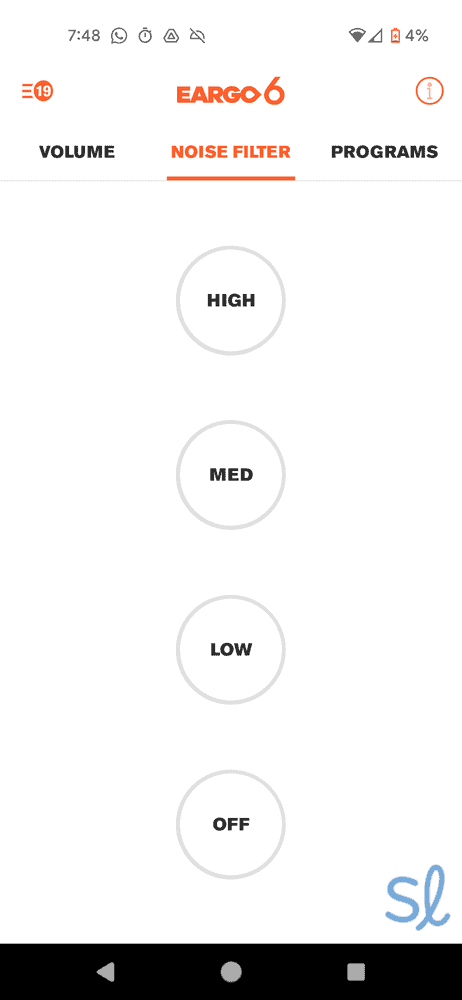
You can easily adjust your hearing aid settings in the Eargo mobile app.
Bluetooth streaming
The Bluetooth streaming feature takes your hearing aids and their capabilities to the next level. You’ll find direct Bluetooth streaming on brands such as Jabra Enhance, Phonak, and Starkey. Depending on the brand and model chosen, features may include the ability to stream content like phone calls, music, audiobooks, and television through your hearing aids. This high-tech component is convenient and improves an individual's overall hearing experience. This streaming feature is ideal for people who use several Bluetooth-enabled devices.
If you’re unsure how a particular feature works, ask a hearing support team member to walk you through it. Just remember to be patient with yourself; it takes time to get used to a new device.
Pro Tip: Does your loved one struggle to learn how to use new tech due to cognitive decline? Check out our guide on the best hearing aids for Alzheimer’s patients.
Benefits of Bluetooth Hearing Aids
Bluetooth has elevated the hearing aid industry by providing a more seamless and convenient user experience. Streaming via Bluetooth has many perks. Here are just a few:
Personalized listening experience
Bluetooth hearing aids allow you to enjoy music and your favorite shows. There is no need to replace hearing aids with wireless earbuds. Bluetooth hearing aids with streaming features can act as both! Bluetooth hearing aids can also be personalized to suit the wearer’s lifestyle and needs. For example, volume can be easily controlled by the streamer or the hearing aids, depending on the manufacturer’s design. Over time, settings can be honed to match the user’s preferences.

Standard protocol
Since Bluetooth is an electronics industry-standard protocol, the functionality is uniform between devices. Bluetooth connection is always secure with no interference. When shopping for a Bluetooth hearing aid, it’s also good to consider other features that may be important to you, such as tinnitus masking, feedback cancellation, background noise reduction, and speech enhancement.
Multiple connections
Bluetooth hearing aids can be connected to various devices so you can conveniently switch between them as needed. For example, if you are watching a movie on your laptop, you can have the hearing aids connected to that device. If you receive an incoming phone call in the middle of the movie, you can pause the audio from your laptop and connect the hearing aids to your smartphone to accept the call.
FYI: If you or a loved one only has hearing loss in one ear, check out our guide to the best hearing aids for single-sided hearing loss!
The specific limitations and processes for this differ by manufacturer and model. If this kind of listening is important to you, ask your hearing care professional to demonstrate how this works and whether or not the hearing aids are compatible with your devices.
Remote control
If you choose a Bluetooth hearing aid that is small or invisible, it may be hard to control settings, such as volume, on the device itself. The great news is that these days, it’s pretty common for hearing aids to allow you to adjust controls remotely from the streamer. Typically, you do this through a mobile app on your smartphone or tablet. This wireless technology makes adjusting your hearing aids quick and discreet.
How Much Do Bluetooth Hearing Aids Cost?
Bluetooth technology is becoming increasingly common in everyday devices, including hearing aids. That said, some of the cheapest hearing aids on the market may not include features like Bluetooth streaming or remote adjustments. As a result, you may have to pay a bit more for the feature. On average, you can expect to pay between $799 and $1,995 per pair of OTC Bluetooth hearing aids and at least $2,000 per pair of prescription Bluetooth hearing aids.
Money Tip: Want to get the best deal on your next pair of hearing aids? Check out our guide to the most affordable hearing aids for seniors!
Worried about the cost of hearing aids? Watch our video below with SeniorLiving.org Editor-in-Chief Jeff Hoyt and audiologist Dr. Brad Ingrao about free and discounted hearing aids.

Take Our Free Online Hearing Test
Wondering if you have hearing loss?
Grab your headphones and get an evaluation in minutes with our free online hearing test.
FAQ
-
Can Bluetooth hearing aids connect to multiple devices?
Yes, some Bluetooth hearing aids can connect to more than one device simultaneously. This feature can vary based on the provider and hearing aid model.
-
Are hearing aids with Bluetooth better?
For older adults with hearing loss who want to stream music, TV, movies, or other audio directly to their hearing aids, Bluetooth is a great feature to have. Some Bluetooth hearing aids can also enable hands-free calling and remote adjustments via compatible smartphones. However, Bluetooth hearing aids may not be the best option for seniors who want simple, low-cost devices.
-
How can I hear my TV better with hearing loss?
If you have a smart TV and Bluetooth-ready hearing aids, simply connect the two via Bluetooth to enjoy seamless audio streaming. Alternatively, if your TV or hearing aids are not Bluetooth-ready, you may want to switch your hearing aids to a preset mode designed for watching television.
-
How do I answer my phone through my hearing aids?
The exact process to answer a call will vary by the model of the hearing aid. If your hearing aids are already connected to your phone via Bluetooth, you should be able to just tap a button on your hearing aids or use the mobile app to answer the call.
-
CDC. (2024). Benefits of Physical Activity.
-
National Library of Medicine. (2012). Hearing Loss and Falls Among Older Adults in the United States.
-
Apple. (2024). Use hearing devices with your Mac.
-
Bluetooth. (2024). Auracast.


